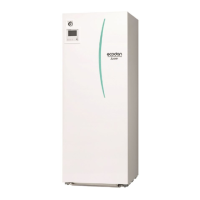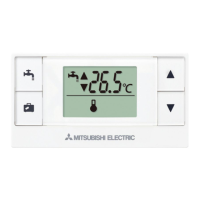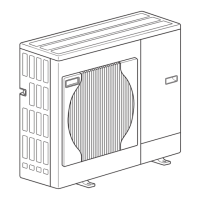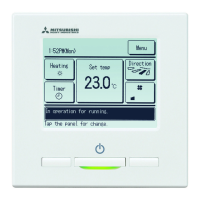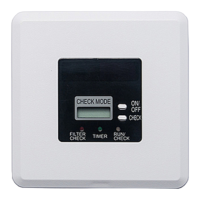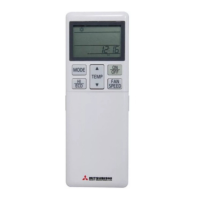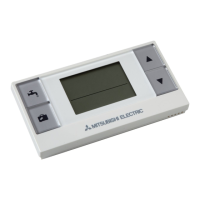Expansion vessel sizing
Expansion vessel volume [L]
System water volume [L]
<Figure 4.3.1>
Pipework Connections
Connections to the cylinder unit should be made using the 22 mm or 28 mm
compression as appropriate.
Do not over-tighten compression ttings as this will lead to deformation of the olive
ring and potential leaks.
Note: To weld the pipes in the eld, cool the pipes on the cylinder unit using wet
towel etc.
Sizing Expansion Vessels
Expansion vessel volume must t the local system water volume.
To size an expansion vessel for the heating circuit the following formula and
graph can be used.
When the necessary expansion vessel volume exceeds the volume of an built-in
expansion vessel, install an additional expansion vessel so that the sum of the
volumes of the expansion vessels exceeds the necessary expansion vessel
volume.
*
For installation of an EHST20C-*M*EB model, provide and install an expansion
vessel in the eld as the model does not come tted with an expansion vessel.
V =
ε × G
1 −
P
¹
+ 0.098
P
²
+ 0.098
Where;
V : Necessary expansion vessel volume [L]
ε : Water expansion coefcient
G : Total volume of water in the system [L]
P
¹
: Expansion vessel setting pressure [MPa]
P
²
: Max pressure during operation [MPa]
Graph to the right is for the following values
ε
: at 70 °C = 0.0229
P
¹
: 0.1 MPa
P
²
: 0.3 MPa
*A 30% safety margin has been added.
Insulation of Pipework
•
All exposed water pipework should be insulated to prevent unnecessary heat loss
and condensation. To prevent condensate entering the cylinder unit, the pipework
and connections at the top of the cylinder unit should be carefully insulated.
• Cold and hot water pipework should not be run close together where possible, to
avoid unwanted heat transfer.
•
Pipework between outdoor heat pump unit and cylinder unit should be insulated
with suitable pipe insulation material with a thermal conductivity of ≤ 0.04 W/
m.K.
Filling the System (Primary Circuit)
Filling
1. Check all connections including factory tted ones are tight.
2. Insulate pipework between cylinder unit and outdoor unit.
3. Thoroughly clean and ush, system of all debris. (see section 4.2 for
instruction.)
4.
Fill cylinder unit with potable water. Fill primary heating circuit with water and
suitable anti-freeze and inhibitor as necessary. Always use a lling loop with
double check valve when lling the primary circuit to avoid back ow
contamination of water supply.
Anti-freeze should always be used for packaged model systems (see
section 4.2 for instruction). It is the responsibility of the installer to decide
if anti-freeze solution should be used in split model systems depending
on each site’s conditions. Corrosion inhibitor should be used in both split
model and packaged model systems.
When connecting metal pipes of different materials insulate the joints to
prevent a corrosive reaction taking place which will damage the pipework.
•
•
5. Check for leakages. If leakage is found, retighten the screws onto the
connections.
6.
Pressurise system to 1 bar.
7. Release all trapped air using air vents during and following heating period.
8. Top up with water as necessary. (If pressure is below 1 bar)
4.3 Water Pipe Work
Hot Water Pipework
The cylinder unit is UNVENTED. When installing unvented hot water sys-
tems building regulations part G3 (England and Wales), P3 (Scotland) and P5
(Northern Ireland) should be adhered to. If outside of the UK please adhere
to your own country’s regulations for unvented hot water systems.
Connect the ow for the DHW to pipe A (Figure 3.1).
The function of the following safety components of the cylinder unit should be
checked on installation for any abnormalities;
• Pressure relief valve
• Temperature and pressure relief valve (EHPT20X-VM2HB ONLY)
• Expansion vessel pre-charge (gas charge pressure)
The instruction on the following pages regarding safe discharge of hot water from
Safety devices should be followed carefully.
• The pipework will become very hot, so should be insulated to prevent burns.
• When connecting pipework, ensure that no foreign objects such as debris or the
like do not enter the pipe.
Cold Water Pipework
Cold water to the suitable standard (see section 4.2) should be introduced to the
system by connecting pipe B (Figure 3.1) using appropriate ttings.
Hydraulic lter work (ONLY EHPT series)
Install a hydraulic lter or strainer (eld supply) at the water intake (“Pipe G” in
Fig.3.4, Fig.3.5)
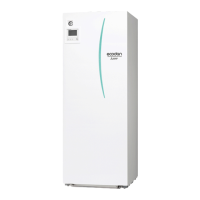
